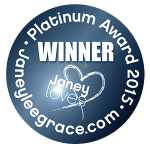As we head into allergy season, you may be dealing with unwanted seasonal allergies like hay fever, and for some, histamine issues can be an all-year-round nuisance.
The symptoms of hay fever occur when the body reacts to environmental triggers such as pollen or pet dander. An overactive immune system responds by producing IgE antibodies which cause the release of histamine and other inflammatory chemicals. The body is basically trying to flush out the ‘invaders’ by causing a runny nose, sneezing and watery, itchy eyes.
This differs from histamine intolerance (HIT) which is caused by a build-up of histamine in the body. HIT can cause a wide range of unpleasant symptoms such as headaches, rashes, flushing, itching, swelling, runny or blocked nose, irregular heartbeat, diarrhoea, nausea, vomiting or abdominal pain. 1https://www.allergyuk.org/resources/histamine-intolerance/
So, let’s look at what histamine is, how it works and what happens when there is too much of it.
What is histamine and where does it come from?
Histamine is a substance created by the body and bacteria: It’s produced in different areas including the stomach, brain and in mast cells as well as by certain gut bacteria.
A large amount of histamine is produced by mast cells (a type of immune cell) which are mainly found in tissues that come into contact with the ‘outside’ – the skin, lungs and digestive tract as well as other tissues such as blood vessels and lymph nodes.
Levels of histamine are also increased by the food you eat:
- Fermented foods: certain bacteria and yeasts involved in fermentation produce histamine.
- Histamine-releasing foods: foods that trigger mast cells to release histamine.
What does histamine do?
- Regulates the dilation and constriction of blood vessels
- Controls the production of stomach acid.
- Stimulates the release of certain hormones such as adrenaline and insulin.
- Initiates inflammation and other immune system reactions when the body is exposed to harmful pathogens or irritants. 2https://www.frontiersin.org/articles/10.3389/
- Histamine also acts as a neurotransmitter, sending messages around the nervous system.
Histamine intolerance
So, overall, histamine is a very useful substance and is found and used widely in the body. However, just like anything in nature, balance is key! The production, release and breakdown of histamine is a finely tuned process. You need just enough to deal with invaders or to heal wounds, but too little or too much and you’ve got a problem.
Although it’s possible to have low histamine production, it’s more common to have histamine intolerance – a condition where the body is unable to break down histamine properly, resulting in a build-up in the bloodstream. 3https://www.ncbi.nlm.nih.gov/pmc/articles/PMC7463562/
The fact that histamine is produced in so many different tissues in the body and performs such varied roles, explains the wide-ranging symptoms when it’s out of balance.
Symptoms related to histamine intolerance: 4https://www.frontiersin.org/articles/10.3389/fnut.2022.1018463/full
- Diarrhoea
- Itchy skin/urticaria
- Headaches/migraines
- Congestion/runny nose
- Weight loss
- Low blood pressure
- Asthma
- Eczema/psoriasis
- Crawling sensation on the skin
- High blood pressure
- Vertigo
- Fatigue
- Facial flushing
- Menstrual cycle changes
- Increased heart rate
- Anxiety
Causes of histamine intolerance:
- Impaired function of an enzyme that breaks down histamine (Diamine oxidase – DAO). DAO is mostly produced by cells in the lining of the small intestine and is the main enzyme for breaking down histamine. If this enzyme is not functioning properly then histamine levels can build up, causing the symptoms above. 5https://www.ncbi.nlm.nih.gov/pmc/articles/PMC7463562/ This dysfunction could be due to genetics, medications, or a lack of gut bacteria producing this enzyme. 6https://www.ncbi.nlm.nih.gov/pmc/articles/PMC9102523/
2. Gut dysbiosis – an imbalance in the types and amounts of bacteria in the gut can affect the levels of histamine absorbed into the bloodstream:
- Low levels of bacteria that produce the enzyme, DAO, to assist in the breakdown of histamine (Lactobacillus rhamnosus, Bifidobacterium infantis, Bifidobacterium longum, Lactobacillus plantarum, Lactobacillus reuteri).
- High levels of histamine-secreting bacteria (eg Staphylococcus, Proteus, Clostridium perfringens, and Enterococcus faecalis).7https://www.frontiersin.org/articles/10.3389/fnut.2022.1018463/full
3. Consuming high levels of histamine-rich foods (remember, bacteria produce histamine so fermented foods are high on the list): 8https://www.frontiersin.org/articles/10.3389/fnut.2022.1018463/full
- Fermented dairy products: aged cheese, yoghurt, and kefir
- Fermented vegetables: sauerkraut and kimchi
- Fermented soy: tempeh, miso, natto and soy sauce
- Fermented alcoholic drinks: wine, champagne, and beer
- Cured meats: salami, ham, and bacon
- Shellfish: shrimp, lobster, and crab
- Certain types of fish: tuna, mackerel, and sardines
4. Consuming high levels of histamine-releasing foods (foods that trigger mast cells to release histamine): 9https://www.frontiersin.org/articles/10.3389/fnut.2022.1018463/full
- Citrus fruits: oranges, lemons, and grapefruit
- Tomatoes
- Spinach and other leafy green vegetables
- Cocoa powder
- Nuts: cashews, walnuts, peanuts, and pine nuts
5. Certain medications that interfere with the breakdown of histamine – please seek advice from your GP.
If you have a histamine intolerance, avoiding high-histamine foods may make you feel better but it won’t heal the root cause. Your diet, your inner ecosystem, and your immune system (which includes histamine) all work together in concert. Restoring balance is ultimately more important than avoiding trigger foods.
How to restore balance:
- Work out your personal quota for eating histamine-rich foods* 10https://pubmed.ncbi.nlm.nih.gov/34209583/– this may take a bit of trial and error. Until your gut health improves and you’re able to tolerate more foods, keep a journal to track your intake of histamine-rich foods and how they affect you. As you progress along your gut health journey, you’ll be able to see the improvements!
- Support a diverse and balanced gut microbiome by following a gut-healthy diet. Histamine intolerance is primarily a gut issue as both the enzymes and bacteria that break down histamine are all located in the gut. 11https://pubmed.ncbi.nlm.nih.gov/30552302/
- Support a healthy gut lining and the creation of the protective mucus layer with a diet rich in fibre and polyphenols. 12https://www.ncbi.nlm.nih.gov/pmc/articles/PMC9102523/ Consider taking a collagen supplement which will help reduce inflammation and promote gut healing. The better the integrity of the gut, the lower the chance of developing histamine intolerance. Note that collagen and bone broth can both activate mast cells in the gut to produce histamine, however, the trick is to reduce the amount of collagen to a level that you can tolerate.
- Feed the butyrate-producing bacteria in your gut (eg Faecalibacterium and Roseburia) with plenty of fibre – butyrate helps dampens down mast cell activation, reducing the release of histamine. Include a variety of pulses, legumes, whole grains, fruit and vegetables, and nuts and seeds.13https://pubmed.ncbi.nlm.nih.gov/22293347/ Remember to drink plenty of water alongside fibre to avoid constipation and if you are currently on a low-fibre diet, introduce fibre slowly to avoid digestive upset such as flatulence and bloating.
- Ensure regular bowel movements – constipation may cause a build-up of histamine in the colon which can then be reabsorbed into the bloodstream. For a step-by-step guide to combatting constipation read this article.
- Stress management – stress can trigger the release of histamine in the body, so managing stress through techniques such as meditation, yoga, or deep breathing can help to reduce histamine levels. Stress can also disrupt the balance of gut bacteria, which can affect the breakdown and elimination of histamine.
*A note about fermented foods:
Some of the probiotics in fermented foods, like kefir, produce histamine. However, research shows that histamine produced by gut bacteria helps to regulate the immune system and has an anti-inflammatory effect. Kefir, thanks to its butyrate content, actually dampens down mast cell activation (decreasing the release of histamine). 14https://pubmed.ncbi.nlm.nih.gov/22293347/15https://www.ncbi.nlm.nih.gov/pmc/articles/PMC8069563/
There are 27 different strains in the Chuckling Goat kefir so it will help replenish many of the beneficial bacteria and increase microbial diversity within the microbiome. If you have a histamine intolerance but you’re keen to start drinking our kefir, we usually advise our clients to start on one tablespoon of kefir per day, increasing by a tablespoon every week to introduce it slowly into the system. If you begin experiencing ‘detox’ symptoms (a worsening of existing conditions), we recommend cutting down to just one teaspoon and building up slowly again.
If you’d like to find out more about food sensitivities, read – Food allergies, sensitivities and intolerances – what is the difference? or for more information on intestinal permeability read Is ‘Leaky Gut’ a thing?
If you are undergoing treatment for histamine intolerance and/or allergies, please seek the advice of your immunologist before making any changes to your diet.
Any questions? Contact one of our Nutritional Therapists via live chat, we’re available on weekdays from 8am to 8pm.
References
- 1
- 2
- 3
- 4
- 5
- 6
- 7
- 8
- 9
- 10
- 11
- 12
- 13
- 14
- 15














